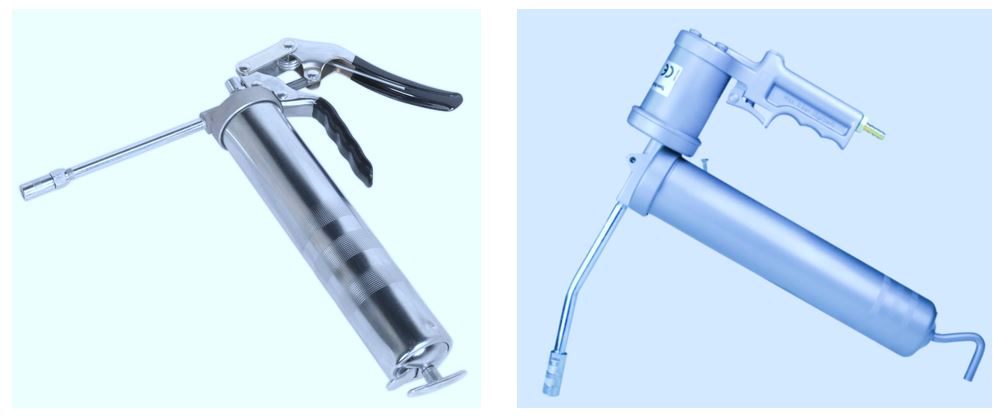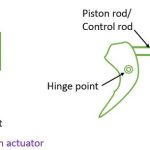Grease guns are indispensable tools in the maintenance and lubrication of machinery, ensuring the smooth operation and longevity of various mechanical components. These devices play a crucial role in delivering lubricants to specific points in machinery where friction occurs, reducing wear and tear and preventing premature failure. In this comprehensive guide, we will explore the different types of grease guns, their applications, and how they work.
Types of Grease Guns
Manual Grease Guns:

Manual grease guns are the most basic type and are operated by hand. They consist of a barrel for holding grease, a plunger, and a lever or handle for manual pumping. The user manually pumps the lever, forcing the grease through a nozzle or flexible hose onto the target lubrication point.
Pneumatic Grease Guns:
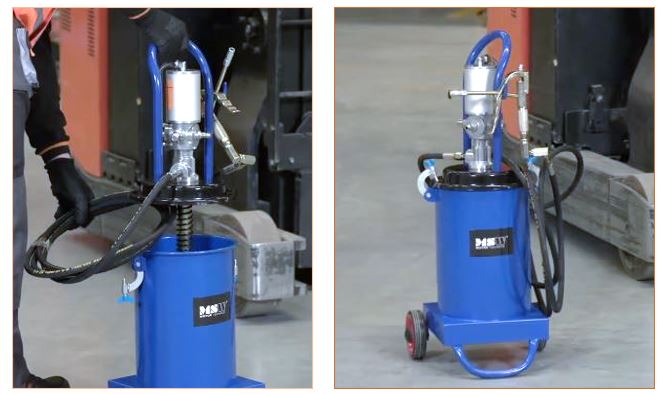
Pneumatic grease guns, also known as air-powered or compressed air grease guns, use compressed air to force grease through the gun and onto the lubrication point. These guns are suitable for high-volume lubrication tasks and are more efficient than manual grease guns. They are commonly used in industrial settings where a large number of lubrication points need regular attention.
Battery-Powered Grease Guns:
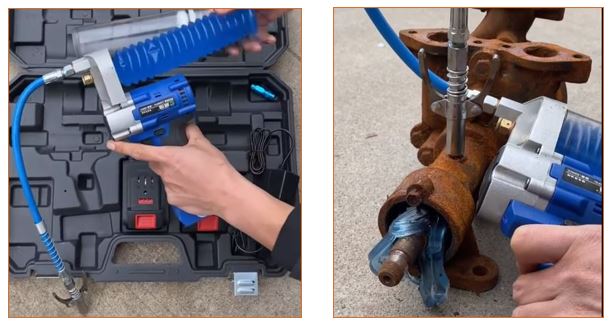
Battery-powered grease guns are convenient and portable tools that utilize rechargeable batteries to power an electric motor, which in turn drives the grease flow. These guns are ideal for situations where manual pumping is impractical, and they provide a good balance between convenience and efficiency.
Cordless Grease Guns:
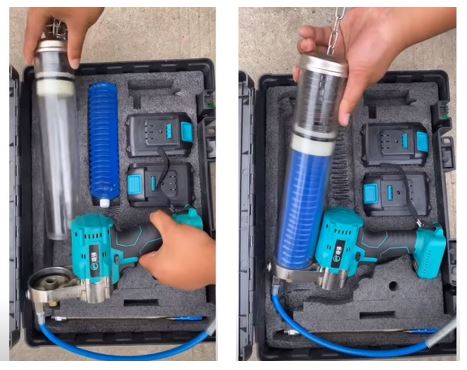
Cordless grease guns are similar to battery-powered grease guns, but they do not have a power cord. This feature enhances their portability and flexibility, allowing users to reach difficult or remote lubrication points without the constraint of a power source.
Mini Grease Guns:

Mini grease guns are compact versions designed for applications with limited space or when a smaller amount of grease is required. They are often used in automotive maintenance, where accessing tight spaces can be challenging.
How Grease Guns Work
Regardless of the type, grease guns operate on a similar principle, relying on the displacement of grease from the gun’s barrel to the lubrication point. Here’s a step-by-step breakdown of how a typical grease gun works:
1. Loading the Grease:
Grease is loaded into the gun’s barrel, either by using pre-packaged cartridges or scooping it from a bulk container.
2. Sealing the Barrel:
The barrel is sealed to prevent air from entering and to maintain pressure during operation.
3. Building Pressure:
In manual grease guns, the user pumps the handle or lever, pressurizing the grease within the barrel. In pneumatic, battery-powered, or cordless guns, the power source drives a mechanism to build pressure.
4. Forcing Grease Out:
As pressure builds, the grease is forced through a nozzle or hose attached to the gun. The nozzle or hose is directed to the specific lubrication point on the machinery.
5. Lubricating the Component:
The pressurized grease is delivered to the lubrication point, forming a protective layer that reduces friction, heat, and wear on the mechanical components.
Essential Considerations and Best Practices for Using Grease Guns
Beyond understanding the types and mechanisms of grease guns, there are several important aspects and considerations associated with these tools. Here are some key points that one should know about grease guns:
Grease Compatibility:
Different machinery and applications require specific types of grease. It’s crucial to use the right grease that is compatible with the equipment and the conditions it operates in. Check the manufacturer’s recommendations or equipment manuals for information on the appropriate grease specifications.
Grease Fittings and Couplers:
Grease guns typically come with different types of fittings and couplers. Ensure that the fitting on the grease gun matches the fittings on the equipment to achieve a secure and effective connection. Some fittings may have unique designs, such as angled or extended reach, to facilitate access to hard-to-reach lubrication points.
Pressure and Volume Ratings:
Grease guns have pressure and volume ratings that indicate their performance capabilities. Understanding these ratings is crucial to selecting the right grease gun for the job. Higher pressure and volume capabilities are often necessary for industrial applications with numerous lubrication points.
Proper Lubrication Intervals:
Establishing a regular lubrication schedule is essential for maintaining machinery. Over-lubrication or under-lubrication can both lead to problems. Consult equipment manuals or manufacturers’ recommendations to determine the appropriate lubrication intervals for specific components.
Storage and Handling of Grease:
Proper storage and handling of grease are essential to maintain its effectiveness. Grease should be stored in a cool, dry place, and contamination should be avoided. When loading grease into the gun, ensure that the barrel and fittings are clean to prevent introducing contaminants into the lubrication system.
Bleeding Air from the Grease Gun:
In pneumatic and battery-powered grease guns, air can sometimes get trapped in the system, affecting performance. It’s important to bleed any air from the gun before use. Refer to the user manual for specific instructions on bleeding air from the chosen grease gun.
Maintenance and Cleaning:
Grease guns, like any other tool, require regular maintenance. This includes cleaning the gun, inspecting seals and fittings, and replacing worn-out parts. Proper maintenance ensures the longevity and consistent performance of the grease gun.
Safety Precautions:
When using a grease gun, follow proper safety protocols. Wear appropriate personal protective equipment, such as gloves and safety glasses, to protect against grease splatter. Be cautious when working in confined spaces or around moving machinery.
Environmental Considerations:
Grease is often considered a pollutant, and its disposal should comply with local environmental regulations. Implement environmentally friendly practices for the handling, storage, and disposal of used grease cartridges.
Training and Familiarity:
Ensure that operators using grease guns are adequately trained on the specific type of gun being used. Familiarity with the equipment, its features, and proper usage techniques contributes to safety and efficiency.
By paying attention to these additional factors, users can maximize the effectiveness of grease guns, promote equipment reliability, and extend the lifespan of machinery through proper lubrication practices.
Conclusion
Grease guns are essential tools for maintaining machinery in optimal working condition by providing the necessary lubrication to reduce friction and prevent premature wear. The choice of grease gun type depends on the specific requirements of the application, including the number of lubrication points, the frequency of maintenance, and the accessibility of the machinery.
Understanding the various types and mechanisms of grease guns empowers users to select the most suitable tool for their lubrication needs, contributing to the longevity and efficiency of the equipment.
